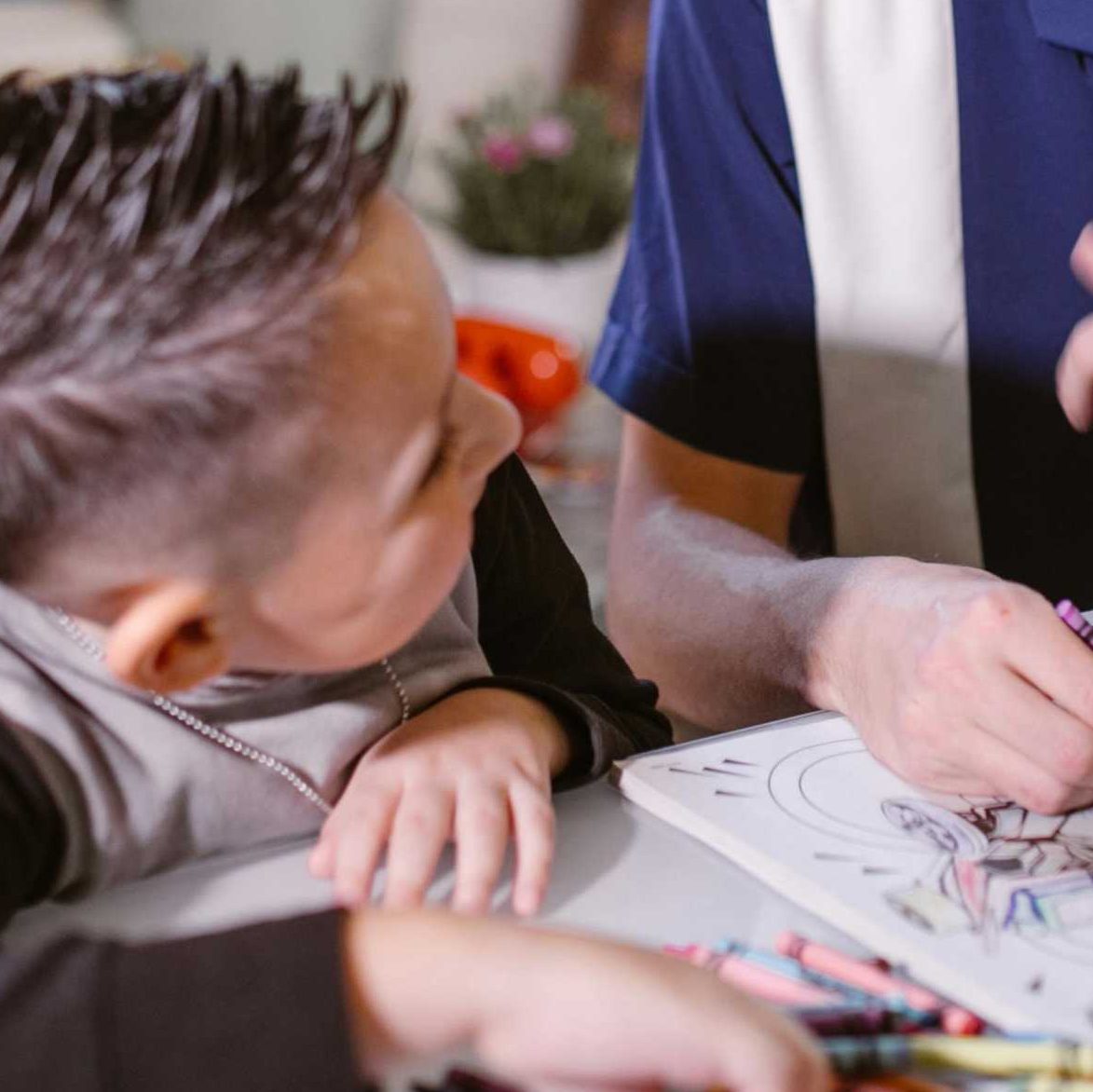Homeschooling is challenging for any parent, but teaching a child with ADHD (Attention Deficit Hyperactivity Disorder) can make it feel even more overwhelming. It’s natural to feel daunted and to wonder how to create the best learning environment for your child.
This is a common concern for parents of children with ADHD. The good news? With a few adjustments and a lot of patience, homeschooling your ADHD child can become a more enjoyable and successful experience for both of you.
In this blog, we’ll explore actionable strategies and mindset shifts that can ease the burden, helping your child thrive both academically and emotionally.
Understanding ADHD in the Context of Homeschooling

The first step in homeschooling a child with ADHD is understanding how ADHD affects learning. Children with ADHD often struggle with attention, impulse control, and organization, which can create challenges in both traditional and homeschool settings.
However, the advantage of homeschooling is flexibility. You can tailor the learning environment to suit your child’s needs. This means you can take breaks as needed, adjust lesson plans, and structure the day around when your child is most focused and engaged.
1. Embrace Structure with Flexibility
Children with ADHD benefit from a structured routine. Having a consistent daily schedule can reduce stress and help your child focus. A simple, visual chart outlining the day’s activities can work wonders. A typical day might include:
- Breakfast to start the day
- Short morning lessons (in 20–30-minute chunks)
- Break time
- Hands-on activities or additional lessons
- Lunchtime
- Creative or physical activities in the afternoon
Remember, flexibility is key. If your child is restless, don’t be afraid to adjust the schedule. Homeschooling allows for this flexibility, so you can alter plans based on your child’s energy and mood.
2. Break Lessons into Manageable Chunks
Children with ADHD often have difficulty focusing for long periods. Instead of trying to complete lengthy lessons in one go, break them into smaller, manageable chunks—usually 20–30 minutes per task, depending on your child’s attention span.
Use a timer or visual aid to show when one task begins and ends. After each chunk, allow for a short break—these mini-breaks help your child reset and stay focused. Stretching, playing with a fidget toy, or taking a quick walk can help maintain engagement.
3. Incorporate Multisensory Learning Techniques
Children with ADHD tend to be hands-on learners. Multisensory techniques, which engage multiple senses, can help your child focus better and retain information. Here are some ideas:
- Visual aids: Use charts, diagrams, and visual tools.
- Movement: Incorporate physical activities, like acting out lessons or using manipulatives (blocks or counters for math).
- Auditory learning: Reinforce subjects with songs, rhymes, or audio recordings.
- Tactile activities: Encourage hands-on projects like drawing, painting, or building.
These activities not only make learning more fun but also cater to your child’s natural learning style.
4. Create a Distraction-Free Learning Space

Children with ADHD are easily distracted, so having a designated learning space free of unnecessary distractions is crucial. Ensure the space is uncluttered and free from toys, noisy gadgets, or other distractions.
Here are a few tips to enhance focus:
- Play soft background music or use noise-cancelling headphones.
- Keep the workspace organized with baskets, trays, and files.
- Minimize visual distractions, such as bright colors or clutter.
A clean, organized space helps create a calming environment where your child can focus.
5. Encourage Physical Activity
Kids with ADHD often have high energy levels. Incorporating physical activity into the day helps burn off excess energy, making it easier for them to concentrate. Simple exercises like jumping jacks or dancing between lessons can make a big difference.
You can also design lessons that require movement, like using an elliptical while solving math problems. Regular physical activity stimulates parts of the brain involved in focus and self-control, which are vital for children with ADHD.
6. Practice Patience and Celebrate Small Wins
Homeschooling a child with ADHD requires extra patience. Remember that every child learns at their own pace. If your child struggles with a lesson, try to stay calm. Instead of focusing on what’s not working, celebrate small wins, such as:
- Completing a lesson with minimal distractions.
- Showing interest in a new subject or activity.
- Recalling information from a previous lesson.
Every small achievement counts, and celebrating these victories will keep your child motivated.
7. Use Technology as a Tool, Not a Distraction
Technology can be both a blessing and a curse for children with ADHD. When used properly, tools like educational apps, video courses, and interactive games can enhance learning. However, technology can also become a distraction if not managed carefully.
Set clear boundaries for screen time and ensure that technology is used for educational purposes. Balance screen time with hands-on activities and physical exercise to keep your child engaged and focused.
8. Incorporate Creative and Free Play

Children with ADHD need opportunities for creative and unstructured play. This allows them to express themselves, use their imagination, and release pent-up energy. Activities like drawing, painting, building with Legos, or playing sensory games can provide a much-needed outlet for emotional and physical energy.
Free play also encourages problem-solving and creative thinking, making it an important part of the homeschooling day.
9. Don’t Hesitate to Ask for Help
Homeschooling a child with ADHD can be overwhelming, but you don’t have to do it alone. Reach out for support when needed. Here are some options:
- Support groups: Connect with other parents who are homeschooling children with ADHD for tips and encouragement.
- Tutors or co-ops: Consider hiring a tutor or joining a homeschool co-op to share the workload.
- Therapists or specialists: If your child’s ADHD is severely impacting their learning, an occupational or ADHD therapist can provide strategies to help.
Asking for help is a sign of strength, not weakness.
10. Take Care of Yourself
Homeschooling a child with ADHD can be physically and emotionally draining. To avoid burnout, prioritize self-care. Here are a few ways to take care of yourself:
- Take short breaks throughout the day.
- Stay connected with friends, family, or support groups to avoid isolation.
- Practice mindfulness or relaxation techniques to manage stress.
Remember, a well-rested and calm parent is better equipped to support a child with ADHD.
Conclusion: You’ve Got This!
Homeschooling a child with ADHD may be challenging, but with patience, flexibility, and creativity, it can also be deeply rewarding. Your child’s learning needs might not fit the traditional classroom model, but homeschooling provides a unique opportunity to tailor the education to their strengths.
Believe in yourself—you are the best advocate for your child’s education, and together, you can thrive on this homeschooling journey.

